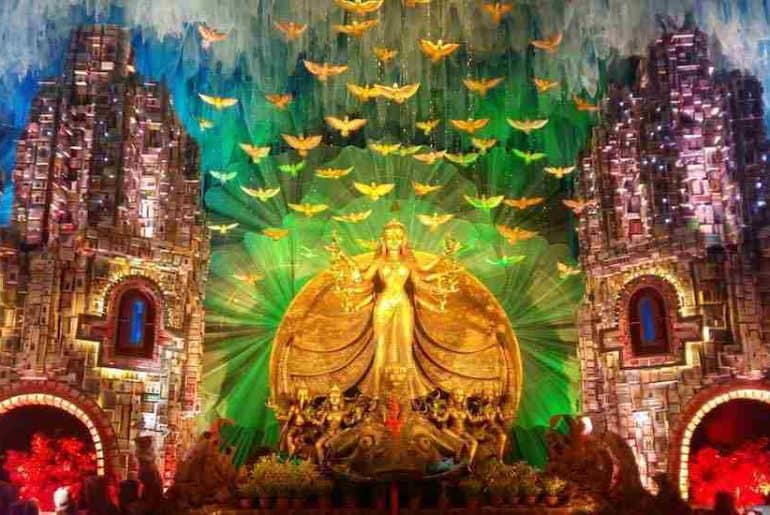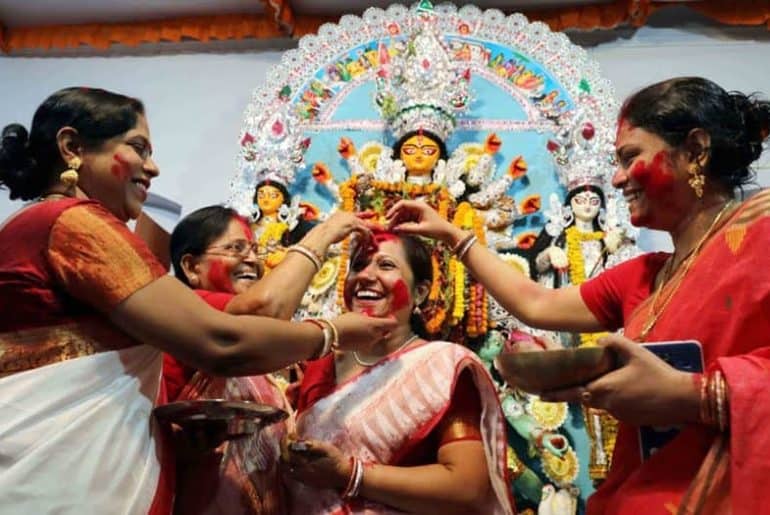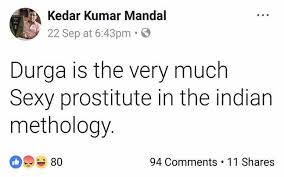As the much-awaited festive season fills the air with excitement and joy, we’ve got you covered with a thrilling and famous adventure – exploring Durga Puja in the capital city. Here’s how you can make the best of this celebration.
The festival of Navratri, coinciding with a long weekend, presents the perfect opportunity to immerse yourself in the vibrant atmosphere of Durga pandals across the city. Delhi offers a multitude of places to explore during this time, making it difficult to manage your schedule for the upcoming three to four days. The ambiance here is so distinct that it envelops you in an aura of auspiciousness. From the well-known ‘Mini Kolkata’ in CR Park to newer ones in Dwarka, Gurgaon, and Noida, the list is extensive. However, what is Navaratri without indulging in the tradition of visiting pandals?
When you step into one of the puja setups, you are welcomed by the resounding beat of dhols and other traditional instruments. The night sky is adorned with colourful lights, and the streets come alive with decorations of fresh marigolds and mango leaves. Small vendors sell balloons, masks, and toys that inevitably catch the eye of every child, while stalls are set up for jewellery, sarees, handcrafted gifts, and paintings – catering to the tastes of both artists and shoppers.
Puja celebrations are also a treat for your taste buds as there are multiple stalls offering a variety of delicacies, ranging from traditional Bengali snacks and sweets like mishti doi and khichdi to spicy chaat and tikki and other North Indian dishes.
The main highlight of these setups is the idols of the Goddess Durga and Kali, a sight reserved for once a year. The divine clay idols, adorned with intricate details, reflect both the feminine and masculine qualities of the Goddess. While her beautiful lotus-like eyes and long black hair exhibit her eternal beauty and gentleness, the weapons and chariot symbolize her courage and valour.
Beyond their religious significance and their role as sources of divine power and positivity, these idols are special because they reflect the hard work and creativity of skilled artisans, who begin preparing them months in advance. Various rituals are performed during Durga Puja, offering the perfect chance to students to experience the culture of Navaratri celebrations.
Once you’re convinced that this can be an exciting and distinctive activity, you can plan your days accordingly. Start by selecting a traditional or glamorous outfit that suits your style and wear comfortable footwear since there will be a lot of walking. Don’t forget to carry a water bottle! Make a list of the places you want to visit, note their opening hours, and plan your route for convenience.
Now, let me introduce you to the places you can visit during these five days, the Timarpur and Civil Lines Durga Puja Samiti. This Samiti has been organizing pandals since 1914, making it the city’s second-oldest setup after the Kashmere Gate Puja Samiti. In a conversation with the President of the organizing committee, Sukhangshu Chatterjee, we learned that during British rule, when the capital was shifted from Calcutta to Delhi, many government servants from Bengal migrated to Delhi. They brought with them the tradition of celebrating Durga Puja, a four-day festival from Maha Shashti to Maha Navami. Government employees living in the Timarpur area initiated Durga Puja celebrations, and now, this pandal is over 100 years old but still continues to keep the legacy of puja alive.
To reach here, you can take the nearest metro to Vishwavidyalaya and then, take an e-rickshaw to Timarpur colony. The pandal is relatively small, with the Devi’s idol at the centre and a stage for cultural events on the left. There’s also an alley dedicated to food stalls.
Over the years, the pandal has adapted to contemporary changes, featuring unique themes each season, to convey a message through the representation of the goddess. Maa Durga is worshipped with her four children: Kartikeya, Ganesha, Laxmi, and Saraswati. The clay image that represents all four children, along with Durga, is perched atop her vahana or carrier, the lion, with the slain asura, Mahishasura near her left foot.
This year’s theme represents the form of Mahishasura Mardini in the background, while the front structure portrays Durga and her children in simple attire, symbolizing her visit to her father’s home from the abode of Kailasha. Her human-like resemblance serves to highlight the presence of human emotions in the divine and the presence of god-like attributes in every human. Just as Durga can take on the form of Mahishasura Mardini when necessary to combat evil, humans too can overcome negativity around them. The message is to spread positivity and goodness, in times of conflict and cruelty.
On a personal note, I found attending the Agamani ceremony, a celebration of the Goddess’s arrival, to be an incredibly uplifting and spiritual experience. The rhythmic beats of the dhol and the serene recitation of mantras created an atmosphere of anticipation as everyone eagerly awaited a glimpse of Maa Durga. Throughout these four days, there will be numerous such rituals which are not to be skipped amidst all the other fun activities.
Timarpur Puja pandal will also host a wide variety of performances, from live orchestras and street plays to traditional dance forms, in an attempt to bring people together for this annual gathering.
The doors are open to visitors from all communities, and the festivities are not restricted to the Bengali community. The organizing committee aims to include everyone while sharing their culture with them. During our conversations, we also discovered that many visitors were once residents of the Timarpur colony and have been returning to the place for over 50 years, even after moving to other parts of the city. It’s their dedication and devotion which makes the place special for them, as well as the visitors.
Timarpur Puja is just one of the many places in Delhi with stories, memories, and traditions that are upheld by people as a part of their commitment to their culture.
CR Park, Minto Road Pandal, Arambgarh, and Safdarjung Enclave pandals are some of the other beautifully decorated pandals in the city that should be on your list as well.
So, don’t wait any longer, and give your mood an instant lift with one of the season’s most exciting activities. Leave café-hopping aside for a while, as it’s time for pandal-hopping! Shubh Navaratri.
Read also – https://dubeat.com/2014/10/04/durga-puja-city-djinns/
Image Credits – Google Images
Priya Agrawal




